- Home
- Deepak Chopra
Reinventing the Body, Resurrecting the Soul Page 11
Reinventing the Body, Resurrecting the Soul Read online
Page 11
Strange as that behavior may sound, these are the particles that make up your body, which means that a fundamental aspect of you is quite familiar with the timeless. To make this less exotic, imagine the color red. Once you see the color in your mind’s eye, ask a simple question: Where is this red? There are no brain cells that turn red when you think of the color, nor do you go to a special place on earth, a color bank, where red is stored. Redness (or any other hue) exists in a mysterious location that seems to be outside ordinary space and time. You can fetch a color instantaneously whenever you want to see it in your mind’s eye, because there was no distance to cover and no time needed to make the journey. The same holds true for how billions of cells manage to be coordinated in your body. There is no master clock ticking away anywhere in your brain—we know this because the brain manages hundreds of different rhythms meshed together. The brain tunes in to a place that’s on the very edge of the timeless. By being anchored there, where atoms first begin to vibrate, setting the timing of the entire universe, your brain has found the only place from which time can be managed. Strange as this concept may seem to the rational mind, which depends on clock time to get through the day, the timeless is a familiar place to your cells. They function as if they were immortal, simply because they make use of the timeless every second. The challenge for us is to adopt functional immortality as our basic way of life. To do that, we must reawaken the connection between time and the timeless, which is known as the soul.
In Your Life: Back in the Flow
Once you can accept that time was never your enemy, then escaping the ravages of time becomes possible. It’s your mind that started the trouble; it’s your body that will get you out of trouble. The mind cuts life up into neat slices—days, weeks, months, years—hoping to hoard as many as possible, but always dreading the end that will inevitably come. By contrast, your body lives in the moment, and each moment merges into another in one continuous flow.
The breakdown of flow is your real enemy. When flow breaks down, the following happens: energy is wasted, communication within the body is cut off, gaps appear in the body’s intelligence. These are invisible events, but they are real. Once you learn to restore the flow, however, your body is fully capable of repairing the damage that has built up. It will naturally return to a state of dynamic balance. At that point the whole aging process comes to an end.
No one can expect to bring aging to a stop immediately. But you can make a major difference starting now. Your aim is to align your mind with a new way of being. We’ve seen the importance of meditation in this regard. Meditation exposes your brain to a less active state, and through repeated exposure, your brain adapts to that stillness and silence. However, there’s still the problem of everyday life, which pulls us into our old belief that time is running out. If you want to have all the time in the world, you can train yourself through the following simple exercises.
Quiet your internal dialogue. This is a simple way to contact the stillness that is the source of awareness. Sit quietly with your eyes closed. Let your breathing settle; put your attention in the center of your chest. As you inhale, let your consciousness settle on the syllable So, and exhale to the syllable hum. Feel the air coolly entering your body, gently carrying the sound; feel the air coolly leaving your body. So-hum, So-hum. (This is an ancient Indian mantra, but you can substitute I am, or Amen, or Om, and the result will be the same.)
Continue for ten to twenty minutes. This simple meditation releases the mind from its incessant chattering. Three things may distract you: outside noises, sensations in your body, and distracting thoughts. When you notice any of these, just easily return to breathing on the sound So-hum. Don’t try to maintain a rhythm; don’t try to hypnotize yourself; this is an exercise in allowing the mind to find its own natural silence and effortless focus.
Discharge tension. Awareness, like water, is meant to flow easily, without interruption. When awareness becomes stuck, tension is created in the body. Cramps, pain, tightness, and stiffness are the most obvious symptoms of this, but at a deeper level your body is storing the memory of old stress. Yoga or deep energy work are great ways to release these body memories. Yet everyone’s body has a natural mechanism for discharging tension, and you can take advantage of it immediately.
Lie down before you go to sleep at night. Assume a position flat on your back without a pillow; spread your arms and legs at your side. Draw in a deep, slow breath, then release it through your mouth in a sigh, as freely and naturally as your body wants. Some sighs may be quick, almost like a gasp; others may be as deep as a sob. You may feel a sense of relief, sadness, grief, elation, or any other emotion. Be aware of the emotions as they arise; you are not just releasing physical tension; you are accessing bodily memories at the same time. The natural discharge of tension bundles thoughts, feelings, and sensations together, so let them all go at once. Do this exercise for no more than ten minutes, because it can be intense; allow yourself to fall asleep if your body wants to. That is also part of the discharge process.
The purifying light. When you are in the flow, there is a certain feeling associated with it: light, open, fresh. Being in this feeling gently pushes out negativity and resistance. One way to help this purifying process along is to bring light to the dark places that hide from being seen, where awareness has a hard time reaching. Visualizing inner light is the closest you can come to actually seeing awareness in its pure state; the real thing is invisible, yet when we say that some-one is glowing with life, we are referring to the close relationship between life energy and awareness.
Sit or lie down, preferably not when you are so tired that you are ready to fall asleep. Turn your gaze inward, which means feel your body from the inside. Visualize a stream of gold-white light cascading down your body. The stream fills you from the crown of your head slowly through your chest, out your arms, then down your abdomen until it divides and flows down both legs. See the gold-white light go out through your feet and enter the ground.
Now take the light back up your body, this time using blue light. See the blue light start at your feet and slowly fill your body until it exits through the top of your head—see it form a laser beam going as high as you can see, out into space and beyond.
This whole cycle should take about one minute. Repeat ten times.
A simple variation is to sit quietly and breathe in the light, then slowly breathe it out. You can alternate between blue and gold-white, but finish by filling your entire body with gold light, seeing it suffuse everywhere, extending beyond you as a golden aura. Ask to be enclosed in this light for the rest of the day.
Toning. Sound can also be a powerful tool for moving stuck energy. Physical sensations and emotions are linked to sound. Sadness gives rise to weeping, happiness to laughter. These are the “sound signatures” of an underlying energy, and if you can find the signature, you can connect to the energy. Old, stuck energies are easier to find this way than trying to trace back the time and place where something happened in the past. Here’s an exercise that uses sound to locate and release hidden energy:
Sit or lie down, preferably in a private place where you can feel comfortable making noise. Take a slow, easy, deep breath and see it reaching down below your diaphragm into the abdomen as deep as it can go. (Don’t force it; just follow the breathing sensation.)
As you exhale, make a low tone. You want it to be long and steady–begin by humming a low note if that helps, but you want to do this with your mouth open. Let the tone extend for as long as you can, until your breath runs out. See this tone rising from your abdomen and coming out of your mouth. Om is an effective tone, but you aren’t trying to sing or chant. Rather, you want your deep stresses to emerge on the tone. The secret here is to let your body make the tone it wants to make.
Toning takes practice. You have to do two things at once: make a tone and keep your awareness in your body. Don’t pay undue attention to the tone itself. Let it come naturally. A good example is deep
sighing. When you sigh and make a vocal noise at the same time, a groan or moan, for example, the two are combined. You feel how much physical relief the sigh is bringing as you make a natural, unconscious sound.
With practice you can locate many sound signatures connected to repressed feelings and buried experiences. Your body knows whether it wants to release a moan, groan, wail, scream, squeal, or cry. Instead of erupting all at once, which can feel jarring, you can provide a long tone that provides a more cushioned release. For example, a low, moaning sound accesses the whole lower abdominal region. A high-pitched eeee accesses the head. If you experiment, you will soon find which tone fits which energy. There is no limit to toning, once you have learned the knack of letting your body discharge tension by letting the stuck energy ride out smoothly and continuously on a sound.
RESURRECTING
YOUR SOUL
THE SOUL IS YOUR
SPIRITUAL BODY
Having a soul could be the most useful thing in your life. So far, however, usefulness hasn’t been the soul’s major attribute. We are told that the soul is our link to God, but like God, it is invisible and far removed from daily affairs. Does your soul keep you healthy? Does it help you make decisions or resolve a crisis? All our lives we have referred to the soul with reverence, a tone of voice we wouldn’t use to talk about our cars. In reality, however, most people get much farther in their cars than they ever do with their souls.
The soul has no function because it hasn’t been successfully defined. No one is waiting for the world’s religions to agree among themselves. It might seem as if the Buddhists are right to take a completely practical view—they dispense with the soul altogether, arguing that if it can’t be defined, the soul has no reality. But that position isn’t satisfying to the millions of people who believe that they have souls. (After all, we know we have a mind even though no two philosophers agree on a definition of that, either.) We can resurrect the soul from its dormant state by turning the tables: Instead of defining the soul first and asking what it does later, why not look at the need the soul fulfills first and worry about a strict definition later?
The main thing your soul does has already been mentioned: it connects you to God. In a sense the soul is like a step-down transformer. The electricity being sent through high-tension power lines is hundreds of times too powerful to go directly into your house; it would burn out every circuit in a flash. In the same way, the ultimate spiritual power can’t surge directly into you and me without harm. It must be stepped down and adapted to human life. The soul exists to perform that function.
I realize that this description seemingly depends upon the existence of God, but it doesn’t need to. Without resorting to any religious belief, we know that the universe contains almost infinite amounts of energy, and yet Nature has found a way to step down the heat of the nearest star, which burns at millions of degrees Celsius, to support life on our planet. It has stepped down the force of gravity, which is so condensed at the heart of a black hole that time and space are sucked out of existence, so that it has only enough force to hold the human body together. Finally, the electromagnetism that explodes in a bolt of lightning—explosions that once struck the earth’s surface millions of times a day in the planet’s infancy—has been stepped down to the minuscule electrical firings of brain cells, which are so weak that it takes extremely precise instruments even to detect them. (The brain’s entire electrical potential is about the equivalent of a sixty-watt lightbulb, but this charge is subdivided among 100 billion neurons, making each brain cell’s portion infinitesimal, a matter of microvolts.)
If the physical forces of the universe must be stepped down so dramatically to work on a human scale, it seems possible that God can be thought of as a universal force that must also be stepped down. But force is a materialistic term. When we think of God, we use terms like love, compassion, truth, intelligence, and creativity. However much they disagree, every spiritual tradition sees these qualities on a scale from zero to infinite. Inert objects do not exhibit love or compassion; they have no visible intelligence. That’s the zero end of the scale. Human beings are imbued with love, compassion, and intelligence, and as we look around, we believe that these qualities are visible in other living creatures. That’s the middle region of the scale. Then we project a higher reality where love and compassion become unconditional, where intelligence is so vast that it can run the universe, and where creativity can bring the universe into being. That’s the highest end of the scale, and the most contentious.
Science doesn’t acknowledge higher reality, because once you look beyond the human brain an invisible region begins. You can see a neuron and therefore claim that intelligence begins with it, but since a neuron is only made of atoms, how exactly did an atom acquire intelligence? Not to mention the aspects of the mind we most cherish—love, compassion, truth, and all the other qualities that give life meaning.
The soul serves to get us past the blocks put up by materialism, but, surprisingly, at the same time it also gets us past the faith demanded by religion. The obstacle put up by science is that everything must be material; the obstacle put up by religion is that one must believe in invisible forces without always having direct proof that they exist. As we will see, the soul can be mapped, even though it is invisible. The human body is a complex system of energy and awareness, and the soul can be defined as a subtler version of those two ingredients. Functioning as your spiritual body, the soul generates and organizes the energy of love, the energy of compassion, the awareness of truth, the awareness of creativity and intelligence. In that way it fulfills needs that are just as basic as the need of the physical body for food and oxygen.
A complete map of the soul would be at least as complex as the human brain. However, here’s a simple map that will turn out to be extremely useful.
GOD = infinite energy, love, creativity, intelligence
SOUL = stepping down energy, love, creativity, intelligence
MIND/BODY = human level of energy, love, creativity, intelligence
A glance at this diagram suggests an exciting possibility: the soul can bring even more of God into the human realm. For millions of people, God’s infinite love has been stepped down too far. They experience only a fraction of the love they should, and even that love comes and goes; it sometimes weakens to the point that their lives seem to have no love at all. The same is true of intelligence and creativity. Millions of people function day to day using the same routines, the same conditioning from the past, the same fixed reactions. Yet there is no reason to believe that God’s infinite qualities must be so diminished when they reach the human level. Looking around, we see countless examples of people who possess enormous reserves of love, creativity, and intelligence. The existence of a Saint Francis, an Einstein, or a Leonardo da Vinci indicates that human potential can reach amazing heights. Why and how did their souls step down so that so much potential still came through—a gush of genius—while for other people the step-down yields barely a trickle?
The answer lies at the level of the soul. Just as physical disease can be traced back to distorted energy patterns at a subtle level of the body, any limitation of the mind can be traced back to distortions of energy, only the level is even subtler, the level of the soul. Not that we want to isolate the mind. The body’s energy is dependent on the mind, and once we find out why our thoughts, beliefs, wishes, and aspirations are not being fulfilled, removing those obstacles will serve to liberate the body even more.
Speaking personally, I find a great emotional release when the soul becomes a practical aspect of life. “Who am I, and why am I here?” The two questions go hand in hand. To answer them, religion says, “You’re a child of God, and you are here to reflect God’s glory.” Science says, “You’re a complex lump of molecules, and you are here to do what those molecules dictate.” Both answers have produced as much trouble and misery as they have alleviated.
Religion is disturbing because it seems optimistic on
the surface but deeply pessimistic underneath. What could be more optimistic than seeing yourself as a child of God? You fit into a divine plan stretching back to the dawn of creation. As this plan unfolds (in the Christian West, at least), it will redeem every soul that loves God. Underlying this scheme is dark pessimism, however, because God may hate us for our sins, and even when we strain not to disobey divine commandments, we unwittingly make mistakes. Worse, the divine plan seems to allow room for immense pain and suffering that God either can’t or won’t prevent. Our purpose in life comes down to guesswork and desperate hopes that we don’t fall into disgrace. Who can find the light when the path lies in the dark? Perhaps the plan is knowable only to God.
The other ready-made answer, proposed by science, is disturbing for the opposite reason. It is pessimistic on the surface and has just enough optimism underneath to keep us from losing hope. Science denies that life has any purpose. Existence is trapped between inflexible laws (gravity, entropy, the weak forces) on one hand and randomness on the other. The most cherished aspects of life, such as love and beauty, are reduced to random chemical firings in the brain. The most valued behavior, such as self-sacrifice and altruism, comes down to genetic mutations that have no purpose other than survival. Taken at face value, no one would choose to live according to such a fixed, meaningless worldview, but science provides a mitigating layer of optimism with its belief in progress. If we are learning more day by day, so if technology makes life easier with each new invention, the pessimism of science can be ignored. You can turn up your iPod if the void begins to seem intolerable.

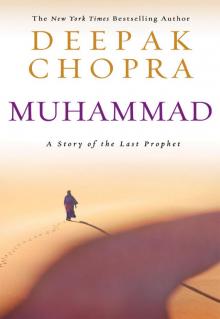 Muhammad: A Story of the Last Prophet
Muhammad: A Story of the Last Prophet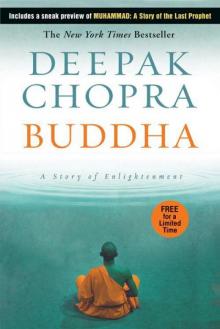 Buddha
Buddha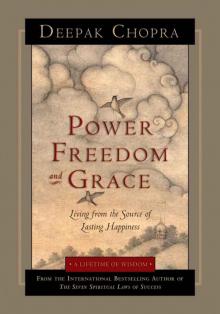 Power, Freedom, and Grace
Power, Freedom, and Grace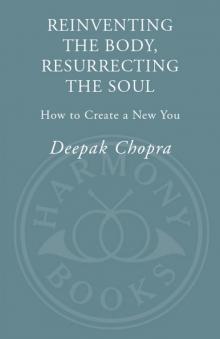 Reinventing the Body, Resurrecting the Soul: How to Create a New You
Reinventing the Body, Resurrecting the Soul: How to Create a New You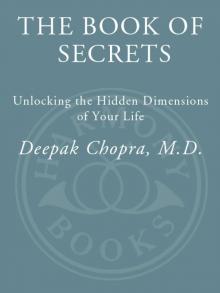 The Book of Secrets: Unlocking the Hidden Dimensions of Your Life
The Book of Secrets: Unlocking the Hidden Dimensions of Your Life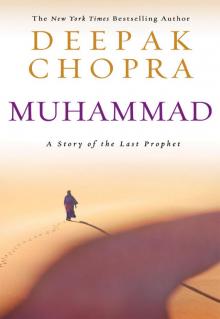 Muhammad
Muhammad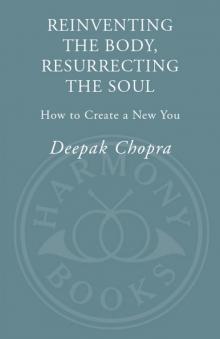 Reinventing the Body, Resurrecting the Soul
Reinventing the Body, Resurrecting the Soul